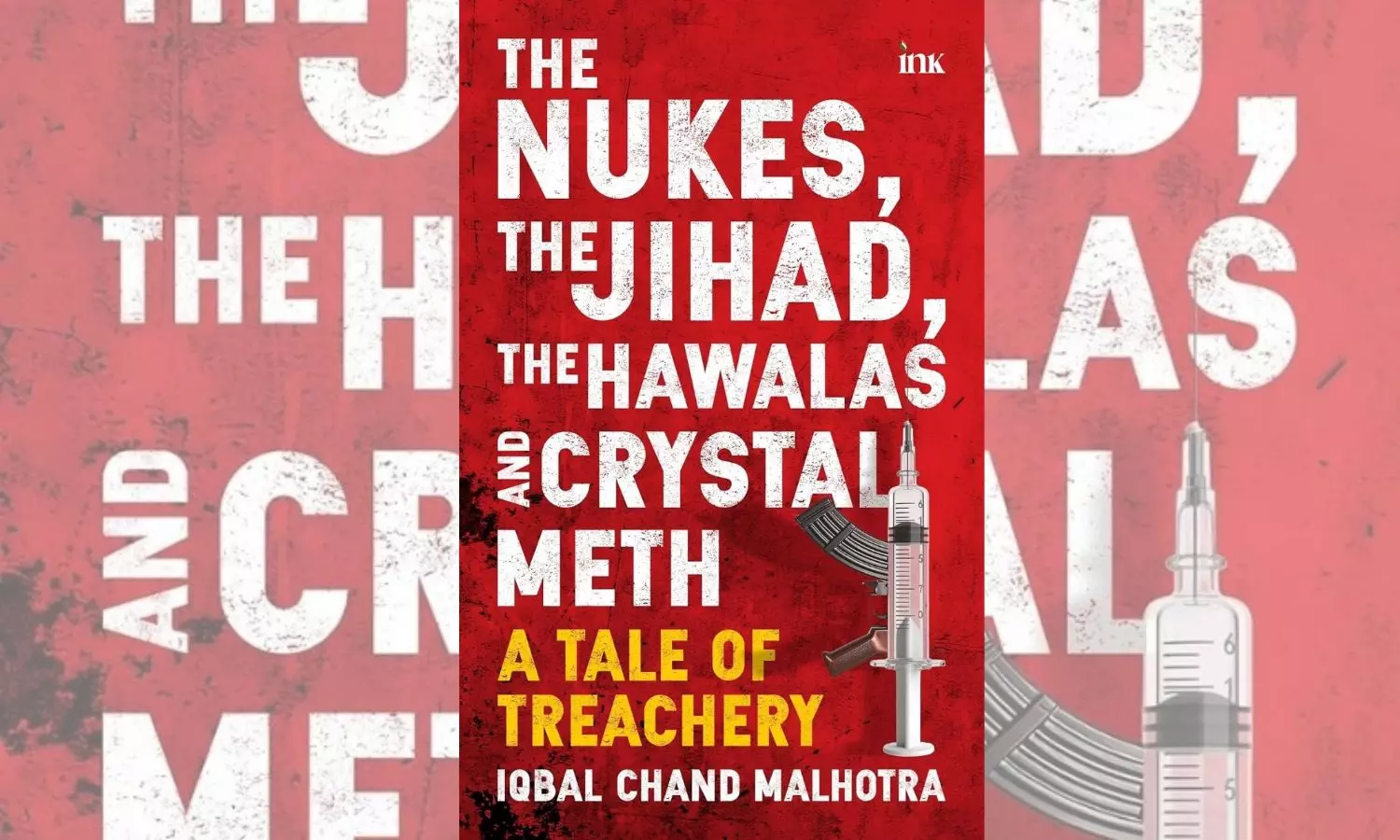Ahead of Trump 2.0 unveiling, New Book Traces Six US Presidencies Failing in War Against Afghan Drugs
He stated that methamphetamine, including crystal meth, was involved in about 15 per cent of all drug overdose deaths in the US in the first year of the Trump’s first term

Guwahati: The US President-elect Donald Trump’s disastrous ‘Iron Tempest’ in his first term sets backdrop to a new book that documents fast-growing Afghanistan sourced drug trafficking internationally.
“In its first months, the Trump administration was confronted with alarming figures showing a surge in crystal meth-induced substance abuse in the US. In 2017, an estimated 1.6 million people reported regularly using methamphetamine, and around 964,000 people aged twelve or older had a methamphetamine use disorder,” wrote Iqbal Chand Malhotra in his book ‘The Nukes, the Jihad, the Hawala and Cystal Meth’.
Trump, incidentally, raised a war cry against illicit drugs in the US during the electioneering for the presidential elections. He has vowed to dismantle the drug trafficking cartels.
“The Trump administration seemed to have accepted that Directorate S’s (Pakistan’s ISI wing) structural oversight of Afghanistan’s narcotics industry was unparalleled. Directorate S had defeated the administrations of six successive US Presidents, from Reagan to Trump, and emerged victorious in America’s longest war,” added Malhotra in the book.
He stated that methamphetamine, including crystal meth, was involved in about 15 per cent of all drug overdose deaths in the US in the first year of the Trump’s first term. “Additionally, methamphetamine was identified in 19 per cent of substances examined by forensic laboratories in the US, highlighting the drug’s widespread prevalence. The purity of crystal meth was over 95 per cent. The DEA began to suspect that this high purity could only be achieved using ephedra as the primary raw material,” added Malhotra in the book.
He noted that the trail to the source of ephedra led back to Afghanistan. “Due to the natural occurrence of ephedra plants and the ease of processing ephedrine in household settings, Afghan-oriented methamphetamine production rapidly expanded into a well-regulated cottage industry. Naturally grown ephedra requires no cultivation or care, eliminating concern about possible airstrikes or mapping of cultivated land for illicit drug use, making it highly lucrative,” added Malhotra in the book.
The price for a kilogram of methamphetamine in Myanmar was three times higher than in Afghanistan due to the use of primarily P2P substances, he stated. “Having adopted a tough-guy approach towards the amorphous Taliban, the White House now focused on attacking Afghanistan’s drug industry. While methamphetamines appeared to be the most threatening, there was no targeted information available about ephedra. The DEA knew only that the ephedra vine grew from Farah province in southwest Afghanistan to Nangarhar in the east, near Pakistan,” added Malhotra in the book.
He further quoted figures released by Special Inspector General for Afghanistan Reconstruction (SIGAR) showing that the amount of land under poppy cultivation in Afghanistan in 2017 had quadrupled since 2001, despite $8.62 billion spent since 2002 to eradicate the business. A 2017 UN survey indicated that poppy cultivation had reached a new record high of 328,000 hectares
“The failure of Operation Iron Tempest could have been avoided if the Trump administration had studied the reasons behind the failure of another anti-drug campaign, Operation River Dance, in 2007,” reasoned Malhotra, while referring to the Bush administration’s attempt to eradicate opium fields in the Helmand province of Afghanistan.
He stated that the “lessons of the past eleven years were forgotten. This victory, crucial to the insurgency’s resilience, had corrupted Afghanistan’s politics and governance beyond redemption. The more violent and unstable Afghanistan became, the more resilient and profitable its narcotics business grew.”
Malhotra, who has written four books on South Assia, argued that “the US government failed to admit the sustained treachery of certain key individuals within and outside the US system who continued to support the narcotics industry”. He spotlighted the role played by an “influential US bureaucrat Zalmay Khalilzad in securing the release of incarcerated narcotics smuggler and Directorate S cutout Haji Juma Khan”.
“Is it purely coincidental that his release was hurriedly secured while Operation Iron Tempest was still ongoing,” asked Malhotra in the book. Was Khan’s release a precondition for the Taliban to negotiate with the Trump administration, further asked Malhotra.
“Did Khan establish business links with El Chapo Guzman while they were both incarcerated in the same prison? Did Guzman and Khan refine their crystal meth operations together in prison,” Malhotra threw the questions, suggesting the linking up of the international drug-trafficking cartels.

